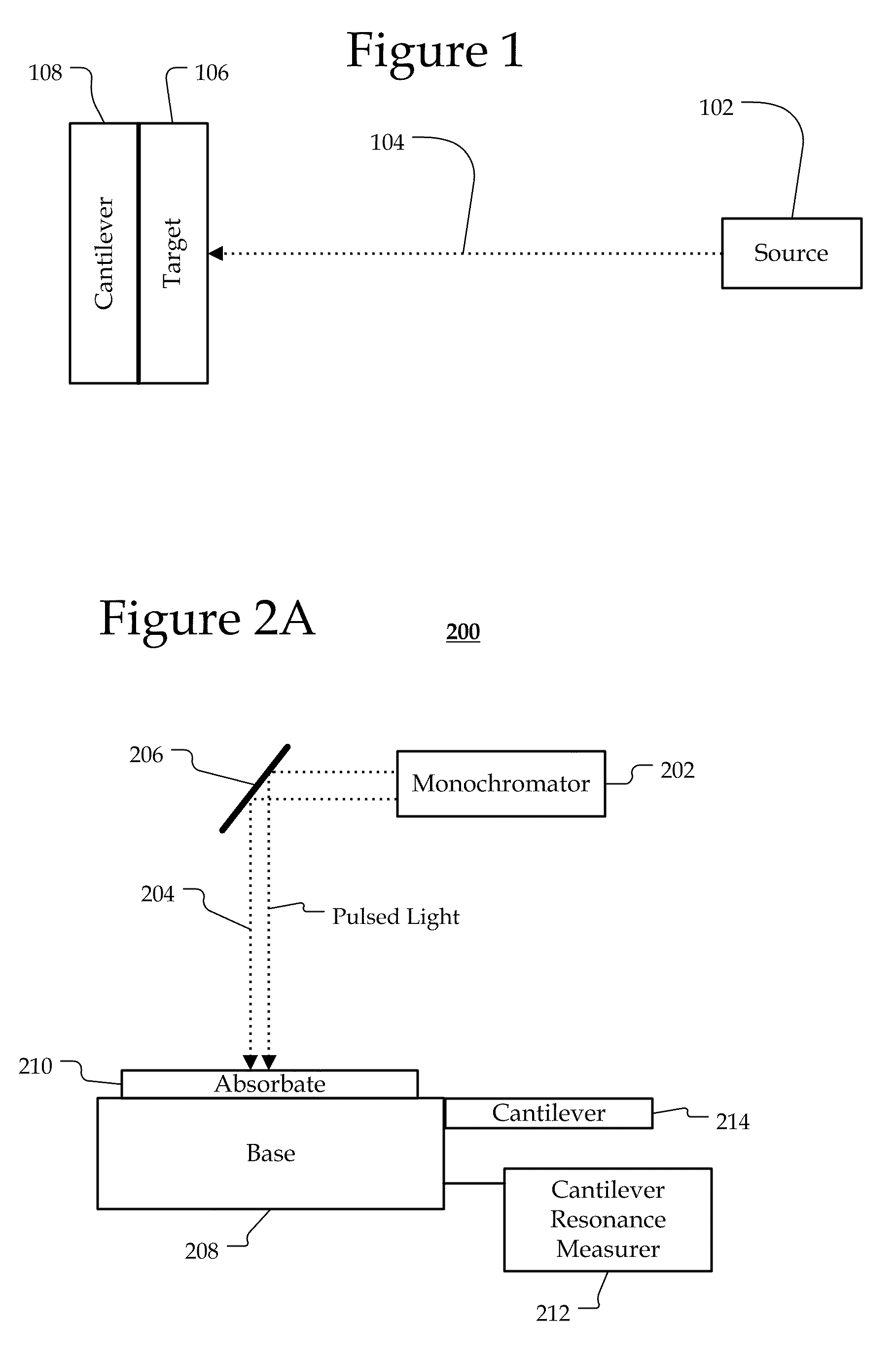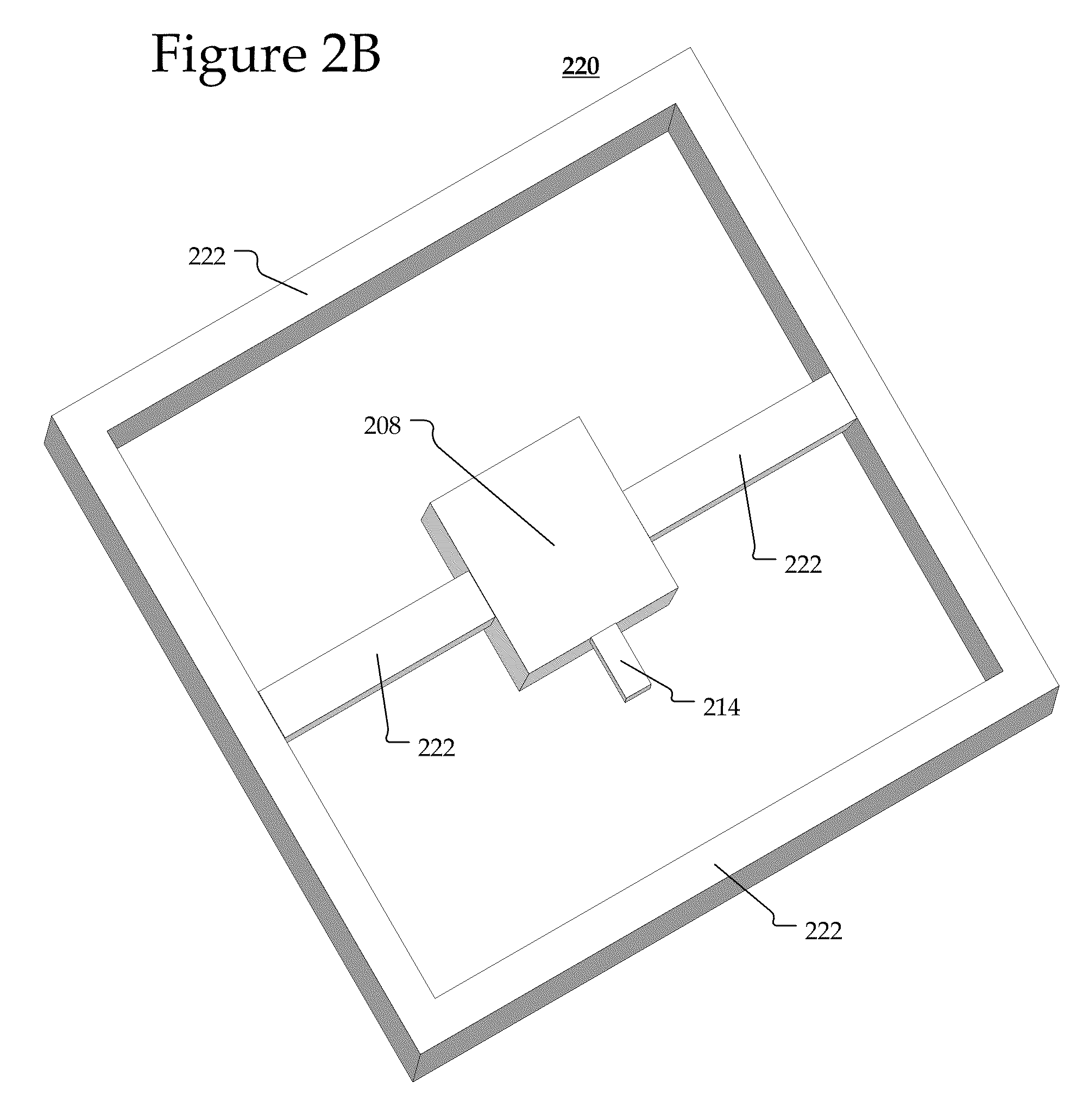Photoacoustic microcantilevers
a technology of photoacoustic cantilevers and cantilevers, applied in the direction of instruments, specific gravity measurement, optical radiation measurement, etc., can solve the problems of difficult detection of pressure/sound waves, local heating and sound waves, and reduce the range and sensitivity of producing a photoacoustic spectrum
- Summary
- Abstract
- Description
- Claims
- Application Information
AI Technical Summary
Benefits of technology
Problems solved by technology
Method used
Image
Examples
Embodiment Construction
[0014]A system generates a photoacoustic spectrum using a cantilever. A source may emit a beam to a target and a cantilever measures the generated signals. The target may be a material, residue, or molecule that is located adjacent to, disposed on, or coated on a base, such as a silicon substrate with an incident surface. The cantilever may be coupled to the base to measure the reaction resulting from the beam interacting with the target at the incident surface. By emitting a chopped / pulsed light beam to the target, it may be possible to determine the target's optical absorbance by monitoring the intensity of photoacoustic vibration produced by the light with the cantilever at different wavelengths. As the wavelength of light is changed, the target may absorb or reject each optical frequency. Rejection may decrease the photoacoustic intensity and absorption may increase the intensity, both of which in turn affect the vibration of the cantilever. Accordingly, an identifying spectrum ...
PUM
| Property | Measurement | Unit |
|---|---|---|
| length | aaaaa | aaaaa |
| thickness | aaaaa | aaaaa |
| thickness | aaaaa | aaaaa |
Abstract
Description
Claims
Application Information
 Login to View More
Login to View More - R&D
- Intellectual Property
- Life Sciences
- Materials
- Tech Scout
- Unparalleled Data Quality
- Higher Quality Content
- 60% Fewer Hallucinations
Browse by: Latest US Patents, China's latest patents, Technical Efficacy Thesaurus, Application Domain, Technology Topic, Popular Technical Reports.
© 2025 PatSnap. All rights reserved.Legal|Privacy policy|Modern Slavery Act Transparency Statement|Sitemap|About US| Contact US: help@patsnap.com



